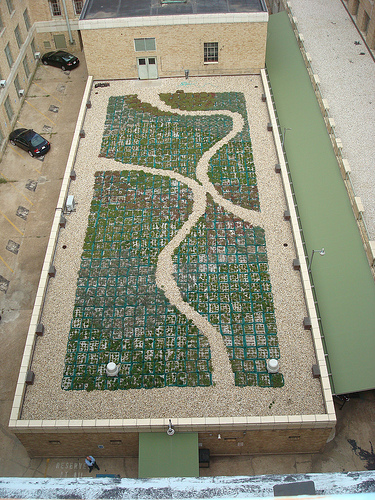At USDA, we’ve made record efforts in the past four years to support homegrown energy. This year, we’re looking ahead to a promising future for biofuels.
Biofuels have already contributed a great deal to our economy, to our energy security and to the bottom line on our farms and ranches. Today we’re taking steps to strengthen the biofuels industry and helping innovate the next generation of advanced biofuels.
For example, we’ve invested more than $320 million into biofuels research to help accelerate the development of technology needed to take the next big steps. Read more »

Navajo Code Talker veterans attended the 2012 Fourth Annual White House Tribal Nations Conference at the U.S. Department of Interior in Washington D.C. on Wednesday, Dec. 5, 2012.
Yesterday, it was my privilege to join other cabinet members in addressing an estimated 500 tribal members from across the United States at the White House Tribal Nations Conference at the Interior Department. Read more »
Tags: Council for Native American Farming and Ranching, DC., Department of In, DOD, DOE, FS, Sacred Sites, Tom Vilsack, Tribal, Washington, White House Tribal Nations Conference
 Forestry
Forestry
As the drought continues today, USDA and other Federal agencies are doing all we can to help farmers, ranchers and communities who have been impacted.
Unfortunately, our tools are limited. Due to inaction by Congress, many parts of the 2008 Farm Bill expired October 1, and other aspects of the law will expire in the coming months.
This brings tremendous uncertainty for rural families – particularly livestock producers who have lost access to disaster programs, and dairy producers who no longer have access to dairy support programs.
The lack of a Food, Farm and Jobs Bill also limits USDA from continuing our record investments in homegrown American energy. Since 2009 USDA has worked hard to ensure that rural America plays a key role in our nation’s energy strategy. Read more »
Rural America has great potential in helping the U.S. meet the future energy demand by deploying alternative energy and energy efficiency sources and practices, so says U.S. Department of Agriculture’s Under Secretary for Rural Development, Dallas Tonsager, who visited the Pacific Northwest National Laboratory in Richland Wash., with other members of a technical advisory committee exploring ways to further the use and development of advanced bio-fuels.
Tonsager co-chairs the Biomass Research and Development Board, which was created by the Biomass Research and Development Act of 2000. USDA and the Department of Energy implement the Biomass Research and Development Initiative, which consists of grants made available through the 2008 Energy Act and other programs. Read more »

Senior Advisor to the Secretary of Agriculture Sarah Bittleman talked about the Agriculture perspectives on advanced drop-in biofuels, at the Industry Roundtable held in the Jefferson Auditorium, U.S.Department of Agriculture Headquarters in Washington, D.C., on Friday, May 18, 2012. Her talk discussed which feedstocks the USDA sees as coming advanced drop-in biofuels industry, what a transition from a food to a non-food related feedstock looks like and when/if they are required, and a detailed overview of the Commodity Credit Corporation (CCC) programs. USDA Photo by Lance Cheung.
Great things continue to happen as America moves forward in developing an “all of the above” strategy to become more energy independent. For example, an agreement was signed between aviation industry leaders and Midwest stakeholders to develop and commercialize sustainable biofuels. USDA will act as an advisor to this effort. Read more »
Did you know that USDA manages 193 million acres of land; occupies approximately 89 million square feet of office and laboratory space and operates over 23,000 buildings? And if this isn’t enough, USDA also operates a fleet of over 40,000 motor vehicles and equipment.

Photo of green roof on court 5 of the South Building. Saves energy and reduces excessive stormwater runoff (which supports our efforts to restore the Chesapeake Bay).
With statistics like these, it is no wonder that USDA remains focused on reducing its rather significant environmental footprint by using clean energy while working towards improving the environment. To accomplish this, USDA conducts its operations in a sustainable manner, complies with environmental laws and regulations and walks its talk. Read more »



